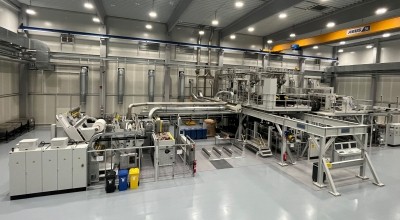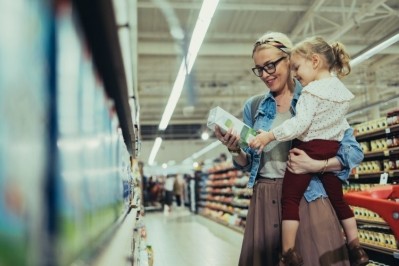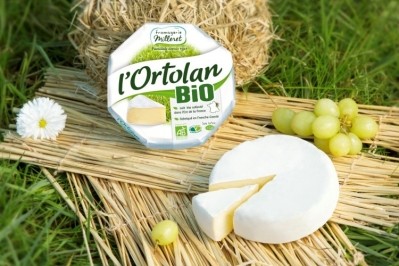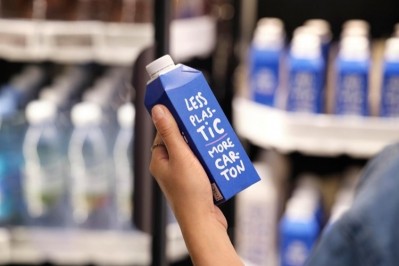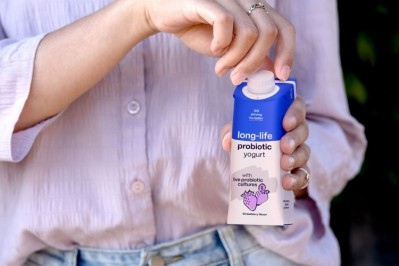‘It will strengthen and broaden our portfolio': SIG poised to innovate ‘faster and better’ at new Packaging Development Center
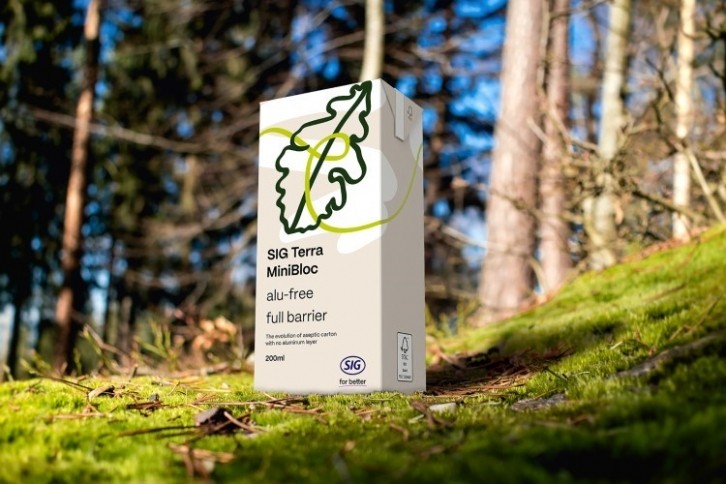
Opened at SIG’s existing packaging site in Linnich near the western German border, the Packaging Development Center is quipped with quality measurement systems and testing equipment as well as extrusion and finishing tech that SIG hopes would ‘significantly increase packaging processability in serial production, system validation and capacity for future digital technologies’. The new plant would also help SIG speed up the development of sustainable solutions, such as aluminum-free aseptic cartons.
Norman Gierow, director global customer marketing & positioning at SIG, told us: “With our new Packaging Development Center, we now have more and different opportunities to implement new developments and adaptations directly in R&D without having to use our standard production equipment and standard operating procedures. It's not about creating larger capacity, but rather about expanding the knowledge base and range of applications for sustainable packaging solutions.”
“The new Packaging Development Center will be a tremendous help in the development, optimization, testing and qualification of new packaging structures. It will strengthen and broaden our portfolio.”
Gierow added that at the new plant, the company will work on all formats across its aseptic carton product range at the new plant. “We truly see that each of our packaging solutions has its place – depending on the consumer group, the market it addresses and/or our customers' brand and distribution strategy. We will be able to apply, test and qualify innovations faster and even better,” he added.
One such innovation is the company’s aluminum-free aseptic carton solutions, such as the Terra range, which was recently recognized with a sustainability award. We asked Gierow what demand the company is experiencing from dairy product manufacturers for so-called alu-free cartons – what’s the adoption rate like? “We can't provide an application rate, but we can assure that this offer is of interest to almost every dairy customer,” he said.
“There is no customer meeting or discussion where our SIG Terra portfolio and its packaging materials without aluminum layer doesn't come up as a discussion point and is a key criterion for our customers’ decisions."
“We are firmly convinced – and this has been confirmed over the course of the year – that if customers don't opt for it in the short term, they will in the medium term.”
Gierow added that dairy companies in particular value the firm’s filling machines, because these can be adapted to packaging materials without aluminum and other sustainable structures without major adjustments. “This unique capability puts SIG at the forefront, and customers are choosing our system, because they want to be ready to use alu-free and any other kind of highly sustainable structures now and in the future,” Gierow added.
Asked what adjustments dairy manufacturers need to be prepared to make ahead of switching from traditional aseptic carton packaging to those that embed alternative barrier technology, he said: “In most cases, only very minor adjustments need to be made, if any at all. And we are very experienced in supporting customers with this - if adjustments are required at all.”
He said that when it comes to UHT milk and related products, SIG’s position is ‘probably unique in the entire industry’ thanks to the company’s investment in alternative barrier development over the years. For example, back in 2010, SIG introduced the combibloc Ecoplus carton, which replaced the aluminum barrier with a thin polyamide layer to make the packaging less carbon-intensive. In 2017, the company introduced aseptic carton packaging that featured plant-based renewable material instead of plastic, and in 2022, the company launched what they called ‘the world’s first’ alu-free full barrier packaging material for aseptic cartons.
But with consumers and regulators alike demanding the packaging sector to do more to improve recyclability and reduce its climate impact, SIG is far from the only market player to develop alternative barrier technologies. In recent weeks, Sweden’s Tetra Pak announced plans to commence industrial production of its own paper-lined aseptic carton from 2025. But Gierow thinks SIG’s years of R&D in the field – coupled with the inauguration of the new Packaging Development Center – would keep the manufacturer ahead of the competition. “Our long track record and the vast experience we have gained over more than ten years is a huge advantage,” he told us. “We have gained a lot of expertise over these years and have optimized our systems. We welcome the fact that our industry peers are also promoting particularly sustainable solutions with alu-free as a key lever for aseptic carton.”
Besides sustainability, what else is front-of-mind for today’s consumer, we asked, and how should food and beverage manufacturers prepare? Gierow said that alongside sustainability, the need for even more flexibility and convenience are strong trends in the packaging industry.
“Meeting price points and specific distribution requirements is crucial for dairy companies,” he told us. “Maximizing equipment utilization while expanding the ability to flexibly meet consumer and retailer demands is the industry's main goal. Another trend is convenience and, above all, convenient packaging. Food manufacturers aim to bring better, healthier, and more sustainably packaged products to consumers.”
This includes but isn’t limited to on-the-go foods and beverages, such as drinking or ambient yogurts and ambient fortified dairy beverages – such as the concept for probiotic-fortified drinking yogurt developed by AnaBio Technologies alongside SIG – and even hot drinks that can be safely microwaved whilst packed in an aseptic carton, a concept SIG debuted back in 2018 with its Heat&Go range.

